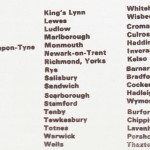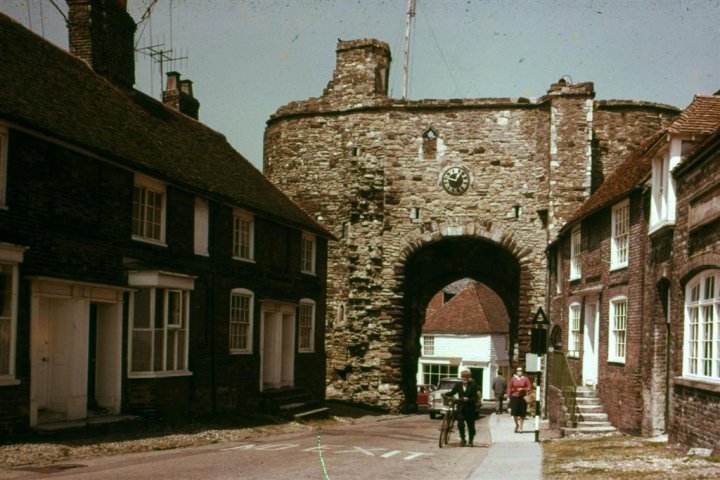This Article was Reprinted by kind permission of the Civic Trust and Architects Journal in the “Rye’s Own” July 1968 edition.
All Rye, Rother and East Sussex Councillors should note that Rye was judged to be in the TOP FIVE worthy of preservation, along with York, Canterbury, Cambridge and Edinburgh. Bexhill did not feature in the first 324 towns.
Rye on the Short List for Preservation CBA list of historic towns
In 1964 the Council for British Archaeology issued a memorandum drawing attention to the implications of the Buchanan report, Traffic in towns, for preserving ‘historic town plans’ and buildings. The memorandum also promised a list of towns in Britain, the historic quality of which particularly required careful treatment in planning or redevelopment proposals. This list of historic towns was subsequently published in July 1965.
The council’s list contains 324 towns of which 51 were considered to be of special importance The inclusion of any town in the list was regarded by the council as “an argument for preparing for it a comprehensive survey of the historic environment, illustrating it’s layout, Its historic buildings, it’s urban quality and any other special characteristics.
This ‘heritage plan’ should, with the transportation plan’ suggested in the Buchanan report, form an obligatory part of the development plan process and should make specific provision for conservation of the features emphasised by the survey.
The short-listed fifty-one towns were regarded as ‘so splendid and so precious that ultimate responsibility for them should be a national concern. These are the fifty-one on the list

Rye in the Top Five
Rye was judged to be in the TOP FIVE worthy of preservation, along with York, Canterbury, Cambridge and Edinburgh, and a special plan based on the Zermatt Scheme was prepared and put forward for the Ancient Town. Rye, perhaps most beautiful of the Cinque Ports, rises compactly from the surrounding marshland within the line of its ancient wall. It is a town of fewer than 4,400 inhabitants, considerably swollen in summer by visitors.
The complete plan for changing Rye in an amazing way sounded far fetched in 1968 when it was unveiled to Rye Borough and East Sussex Councillors in Rye in 1968. The essence of the scheme was to close every street inside the town wall to all private and commercial vehicles. Only official electric vehicles would be used. Almost 50 years on the scheme seems much more viable in the light of progress made. The government of the time was keen for it to go ahead then and were to make £1,000,000 available to Rye to help carry it out.

Zermatt, high in the Swiss Alps, is a holiday resort of 2800 permanent residents and 13000 visitors at the height of the season. Zermatt relies completely upon battery electric transport for all deliveries. During 1968 to supply sixty shops, seventy-five hotels and restaurants, and 1200 flats and houses 5300 tons of consumable goods were delivered in Individual packs. Zermatt’s transport fleet is made up of eighteen 1 ton utility vehicles for passengers and goods, and twenty-two 3 ton to 4 ton goods vehicles. Could Rye do likewise and exclude conventional vehicles from the historic area within the wall? The plan shows a possible route arrangement for an electric vehicle system, with a suggested location for transport lnterchange.
Check it out for yourself, the entire plan, including map of Rye with no go combustion traffic area, is included in the 50 Year Anniversary Issue of “Rye’s Own” out on 1 November.
“Rye’s Own” Bulletin 13 October 2015
“Rye’s Own” June 2015 Issue (Hard Copy Back Numbers Still Available) All articles, photographs, films and drawings on this web site are World Copyright Protected. No reproduction for publication without prior arrangement. © World Copyright 2015 Cinque Ports Magazines Rye Ltd., Guinea Hall Lodge Sellindge TN25 6EG
